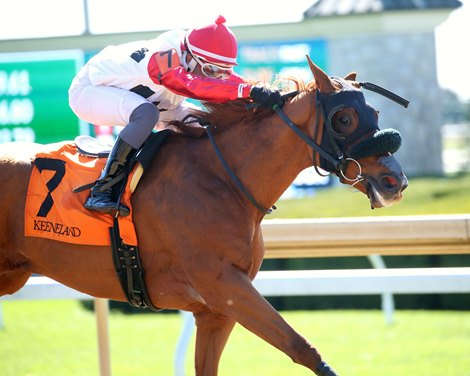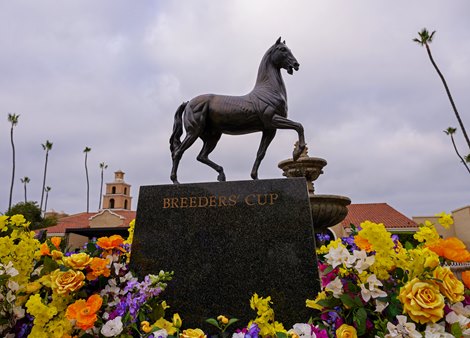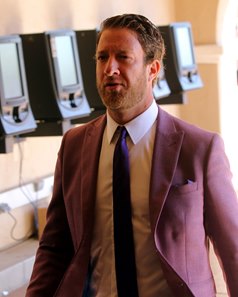Saying he believes today's pari-mutuel wagering pools have been negatively impacted by computer-assisted wagering, one of the most famous bettors in North America says he will discontinue betting on horse races aside from its top days.
Barstool Sports founder Dave Portnoy said in an Oct. 17 post to X (formerly Twitter) that he would not be attending the Breeders' Cup World Championships but did plan to wager on those races. Then he added that wagering big days such as the Breeders' Cup would be an exception as he plans to halt most of his betting on horse racing because he's concerned about fairness issues involving CAWs.
"I will say the CAWs have basically forced me to stop betting horses except the huge days," Portnoy said.
A day later, Portnoy predicted regulators eventually will take action against CAW and protect everyday horseplayers. He questioned a current state of affairs in which track owners The Stronach Group and the New York Racing Association hold ownership interests in a CAW. TSG has an 80% stake and NYRA a 20% stake in the CAW platform Elite Turf Club.
"We love betting horses. It's my favorite sport to bet on," Portnoy said. "I can't do it anymore. It's actually criminal that tracks are allowed to have their own CAWs. The laws will eventually change just like all other sports where owners can't bet on their own teams or companies. But until then, the tracks are basically stealing from their customers in my opinion. It's ruined betting on horses."
Note the first part of that post. The favorite sport to bet on by arguably the country's most famous gambler is horse racing, and yet he finds the current pari-mutuel product is not working for him. Every racing executive in the country should consider that statement as much of the industry embraces a significant amount of action from CAW players and even has moved into ownership roles. For some time, I've wondered if the sport is thinking long-term in this area?
CAW betting is a form of wagering that uses computer algorithms to formulate selections and then push those bets through to pari-mutuel pools. These individuals and teams typically bet massive amounts of money into the pools, and, thanks to generous rebates, are exposed to lower effective takeout than most players in those pools. While there is little transparency to determine the exact amount of CAW betting made each year on United States races, experts agree it's in the billions of dollars.
While Portnoy is not the first traditional horseplayer to complain about the expansion of CAW betting in recent years, he is the most prominent. On X, he has more than 3.7 million followers.
Elite Turf Club president Scott Daruty said CAW accounted for nearly 23% of the money in Santa Anita Park pools from July 1, 2024-June 30, 2025. He acknowledged it likely accounts for a larger percentage at some other tracks. Pat Cummings, who served as the executive director of the former Thoroughbred Idea Foundation, which advocated for horseplayers and owners, estimated in late 2022 that CAW accounted for 33% of pari-mutuel handle on U.S. races.
Portnoy's comments followed several days of hot conversation about CAWs by horseplayers on social media. That talk was spurred by a surprisingly low exacta payout for a pair of longshots finishing first and second Oct. 16 at Keeneland, shifting win odds during races at that track during its fall meet, and a recent pro-CAW decision by Breeders' Cup.
In the second race Oct. 16 at Keeneland, 44-1 Wrong Shoes posted a 5-length victory over 53-1 Lel Ditty in a 6-furlong maiden claiming race for 2-year-old fillies. Lel Ditty finished more than 3 lengths ahead of third-place Loving Mischief. Most bettors expected a four-figure payout for the $1 exacta, but instead that wager returned just $286.74.

Cummings, currently with owner Mike Repole's National Thoroughbred Alliance, posted to X the late changes to that exacta wagering pool that led to the relatively small payout. His post said in the second-last 20-second cycle calculating the pari-mutuel odds, the 7-5 exacta was returning $1,333.67 for a dollar wager. But in the final cycle, there was $446 wagered on the 7-5 combination—driving it down to the $286.74 payout. In the two 20-second cycles before the pool was closed, a total of $8 was wagered on the 7-5 combination. Cummings said before the $446 wagered in the final cycle, a total of $103 had been wagered on the combination.
The low payout shocked longtime professional horseplayer Mike Maloney, who previously was based at Keeneland or its simulcast outlet.
"... I've been watching Keeneland racing for over 50 years and (the) exacta and trifecta prices in race 2 are the most questionable I've ever seen," Maloney said. "Both seem impossibly low by my math and experience."
Traditional players find themselves wagering into pools in which, more than ever, the final odds have become a guessing game. In an Oct. 18 blog post at Barstool Sports, Mike Mutnansky expressed hope that Portnoy's criticism of CAW would bring changes. He presented images of an Oct. 17 race at Keeneland in which a horse is 8-1 just before the gates open, 7-1 just after the start, 4-1 just seven seconds later, and 3-1 when it crosses the wire as the winner.
"That's an almost 63% drop from the price the horse was going into the gate," Mutnansky notes. "Even if you bet on the winner, you felt like you had money taken right out of your wallet."
On Monday, Mutnansky posted that Portnoy is considering joining a lawsuit that argues CAW violates racketeering laws.
Longtime handicapper Michael Kipness, known as The Wizard, has provided detailed handicapping products for horseplayers for years, but on Oct. 20, on X, he said he would discontinue that service if late odds drops continue at the Churchill Downs fall meeting.
"If I see the same odds drops at Churchill, I will end producing products and betting that meet quickly," Kipness said in a post to X. "I refuse to tell people to bet on horses where I cannot properly assess a horse's price and then watch the odds go down as the race is being run. It's suspected thievery."
Kipness' Oct. 20 post followed an Oct. 12 post expressing frustration about late odds changes at Keeneland.
"For everything good Keeneland does, late odds drops while (the) race is going on is criminal," Kipness said. "Bettors feel like fools and their money stolen out of their pockets when they fall victim to this. Something has to be done soon, or else the game will continue to die. Happens at other tracks."
My guess is Keeneland will make some changes ahead of next year's spring meeting. There are ideas out there.
In an effort to curtail changes to late odds information as wagering dollars reach the pools soon after the start of races, Del Mar and Santa Anita this year followed the New York Racing Association's lead by cutting off CAW action in the win pools at two minutes to post. NYRA put this policy in place in 2021 and also offered traditional players some pools that are free of CAW money, such as the late Pick 5.
In an interview with BloodHorse, Daruty said he believes it's not just the CAW money arriving in pools that is impacting odds changes that are posted during the race—as the information for the public catches up with the last-second wagering—but an overall increase in all wagers arriving just before the start of the race. He said that with CAW players largely withdrawing from win pools after Santa Anita put in the two-minute restriction for them, it offered some revealing numbers about the policy.
"During a one-year period of Santa Anita data studied (July 1, 2024 through June 30, 2025), the average amount of handle in the last 60 seconds coming from CAW players in each race was 30%. That means that 70% of the late money was from non-CAW players," Daruty said. "So CAW players certainly contributed to the late odds shift, but they were not the sole cause. This fact is borne out in the experience of the recently completed Santa Anita autumn meet. There was virtually no money wagered by Elite customers in the Santa Anita win pool this meet. But in 15% of the races at Santa Anita's autumn meet, the price of the winning horse dropped by 10% or more in the last 30 seconds before the pool closed—with virtually no CAW money in the pool."
Mutnansky said a 100% ban of CAWs would be unrealistic, but he thinks cutting off their win, exacta, trifecta, and superfecta pools at two minutes before the race would reduce volatility. In a social media post, Portnoy said the cutoff should be five minutes, which would allow traditional players to handicap based on a good idea of what the final odds would be.
While the Breeders' Cup World Championships will be contested at Del Mar this fall and Del Mar has put the two-minute restriction on CAW teams betting into win pools, BloodHorse reported Oct. 16 that Breeders' Cup would allow CAW wagering into the win pools up until the gates open (the standard cutoff time for all players). Breeders' Cup officials said its pools are large enough to not be dramatically affected by CAW wagering just before the gates open.

"Fortunately, due to the substantial liquidity in our multimillion-dollar wagering pools, the late odds fluctuations that frustrate horseplayers have not been an issue at the World Championships, including last year at Del Mar," a statement attributed to a Breeders' Cup spokesperson noted. "In addition, the competitive nature of our races—with full fields of the best runners from around the globe—has historically provided recreational players with great betting value and opportunities for generous returns."
Reacting to the decision by Breeders' Cup to not follow the two-minute shutoff for CAW in win pools, Maloney said on X that when it comes to what pari-mutuel wagering should be, "We have lost our way."
Beyond social media debate, the bottom line is that in keeping CAW players engaged by paying out massive rebates—relative to most other players—the industry appears to be losing more traditional players. Granted, this is based on the relatively small amount of public-facing data on pari-mutuel pools that is available.
In the Covid year of 2021, new and returning horseplayers betting from home fueled a 12% jump in handle for U.S. races. But those traditional players have not stuck around as 2022 saw a 0.9% decline, 2023 a nearly 3.7% decline, and 2024 about a 3.3% decline. Through the first three quarters of 2025, betting on U.S. races is down another 2.1% (and none of this is adjusting for inflation, which likely would make these numbers even worse). Granted, some of these losses are tied to the elimination of race days, but it appears that racing has not retained the players it enjoyed from the Covid-year bump.
Because racing always has had its sharp horseplayers—and now CAW appears to have taken things to another level in that regard—betting Thoroughbreds can be especially challenging for new players. In Kentucky, on-track players have been losing well-above the industry's estimated blended takeout rate for wagers of about 21%—the expected price of wagering. Takeout is the portion of each wager largely used to fund purse accounts and pay tracks, but an "effective takeout" is what a group of players actually is paying, based on how much money is returned to the players in that group.
One way of looking at this trend is through numbers from the Kentucky Horse Racing and Gaming Commission that follow how much money on-track players are wagering and how much is coming back to them in winnings. I chose this group of players because the information is available and it would not include CAW players, as they are not at the track.
The effective takeout for on-track players at the Churchill Downs September meeting was 28.5%. The effective takeout rate was even higher at Kentucky Downs, where on-track players saw nearly 32% of their wagering dollars not returned in winnings. That's nearly a third of their wagering dollars not coming back as winnings. In comparing the effective takeout rate for on-track players in September at Churchill Downs to the industry's blended rate, we see it's 36% higher. Kentucky Downs on-track players were paying a rate 53% higher.
While noting he didn't have a full understanding of all of the trends in the Kentucky on-track pools, Daruty thinks they are being heavily influenced by the more social players at the track out just a time or two a year, while not accounting for the better players at the track that might be betting through their ADW accounts. In an interview with BloodHorse, Daruty estimates the CAW impact on traditional players is about a takeout rate increase of 1.6%-2.5%.
"Over the past 10 years, the aggregate win rate—cashed tickets divided by total wagers—of the entire XpressBet retail customer base (traditional players), when measured quarterly on a rolling four-quarter basis, has trended down by 1.6%," Daruty said. "In other words, the aggregate win rate of all XpressBet retail customers combined during the most recently completed four calendar quarters was 1.6% less than the aggregate win rate of all XpressBet retail customers combined during the four quarters of calendar year 2016.
"The actual 1.6% win rate decline over the past 10 years is consistent with the theoretical mathematical calculation of 2.5% (a number Daruty offered earlier in the interview), after adjusting such theoretical calculation downward slightly to reflect the fact that some CAW play—along with many advantage players—-already existing in 2016 so already impacted the Xpressbet retail customer base to some degree."
It should be noted that because horse racing relies on takeout to fund its purses and tracks, it already has a high rake compared with other gambling, with that blended rate around 21%. If that rate is effectively increased another 1.6%-2.5% it goes to 22.6% to 23.5%. Those 22.6%-23.5% rates are 7.6%-11.9% higher than the rate of 21%.
Pools free of CAW players do offer larger payouts to players. In early 2023, BloodHorse found that at the 2022 Saratoga Race Course summer meet, the late Pick 5 payouts were 3.8 times the expected win parlay, while the early Pick 5 returned just 1.2 times the win parlay. Both pools have a takeout rate of 15% but the late Pick 5 pool does not allow CAW wagering, while the early Pick 5 pool does allow CAW.
The bottom line is that racing needs to weigh the short-term gains of CAW handle—specifically how much of that CAW handle is going to purses and tracks—against the long-term problems of a less attractive pari-mutuel product for the vast majority of players. If those traditional players continue to leave the game, ultimately any money CAW players are generating for purses and tracks will dry up as well. I think at the very least the CAW win-bet restrictions tracks have put in place, as well as some CAW-free pools like we've seen at the NYRA tracks, make sense as the industry pursues the correct balance.










